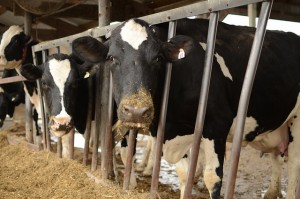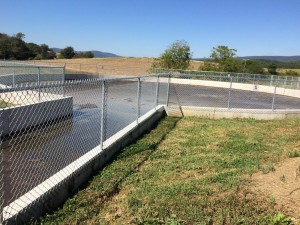BAD Farms doing GOOD things for our drinking water
by Beth Garcia
Where can you find yogurt, cheeses…and mounds of manure? At Beth and David Rice Farms (AKA “BAD Farms”) in Berks County, Pennsylvania. This dairy farm is part of the Maiden Creek watershed which supplies drinking water to 1.5 million people downstream, including the cities of Reading and Philadelphia. Recently I had the chance to visit the farm to celebrate the announcement of the latest round of Schuylkill River Restoration Fund (SRRF) grants. That day, over $274,000 was announced for nine projects that will conserve land and reduce agricultural pollution, stormwater runoff, and abandoned mine drainage.
The recently installed 6-month concrete liquid and dry manure storage basins at BAD Farms were funded in part by past SRRF grants. Farm improvements like the storage basins prevent microbiological pathogens from entering the watershed, protect groundwater, and allow farmers to put higher-quality nutrients on their crops at the right time.
This farm, like many, wouldn’t be able to make these improvements without the help of many partners in the Schuylkill Action Network (SAN). EPA is part of the SAN and SRRF advisory committees, helping the group achieve its mission of protecting and restoring Schuylkill Waters by bringing together partners of all levels. Over the past ten years, the SRRF has distributed over $2.5 million, and leveraged another $2.5 million, to complete 73 projects that protect and restore the Schuylkill River for recreational use and as a source of drinking water. This year, The Coca-Cola Company joined several long-time partners in funding projects to protect the Schuylkill.
The proof is in the pudding: when partners from all sectors – non-profit organizations, government agencies, and private companies – come together, we can achieve greater water quality protections than any one partner could do alone. Check out some ways that you can do good things – like BAD Farms – to protect drinking water sources in your area.
About the Author: Beth Garcia is a member of the Source Water Protection and DC Direct Implementation teams in EPA Region 3. Beth lives in a lake community where she enjoys swimming, kayaking, and fishing all within walking distance from her backyard.




 By Leon Latino
By Leon Latino